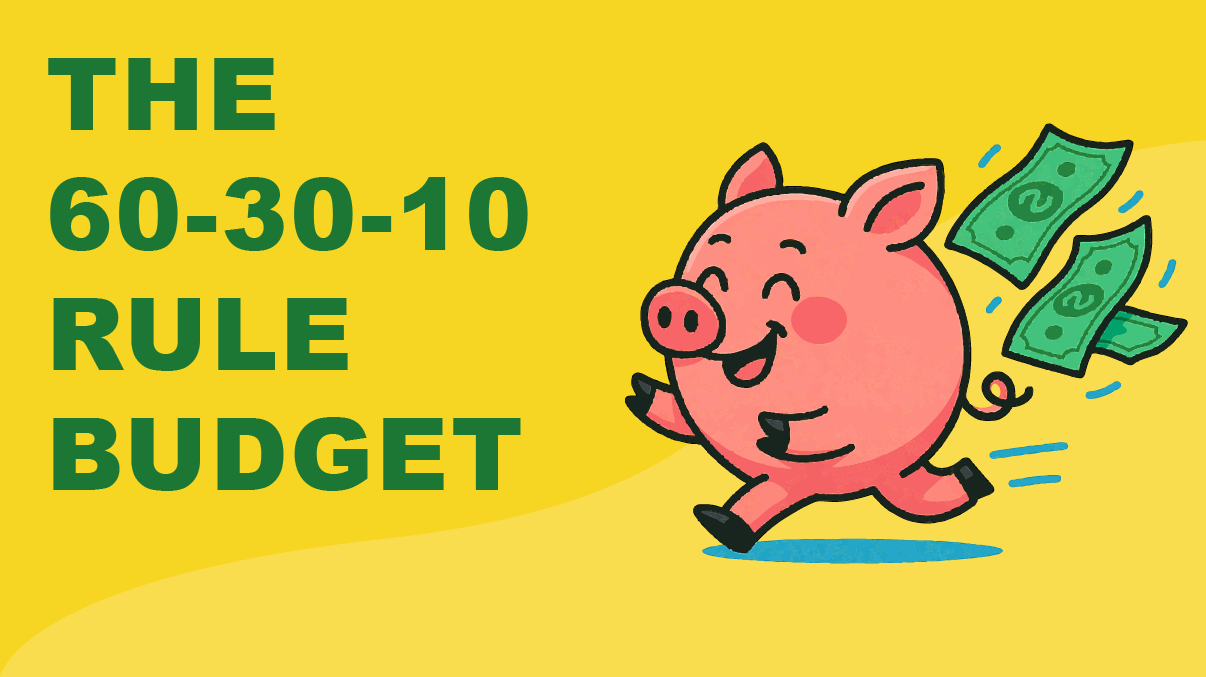The First Time I Tried a Budget That Actually Stuck
When I first started managing my own money, I tried every type of budget I could find. Most were too complicated or too strict, so I would give up after a month. Then I came across the 60 30 10 rule.
It was simple, easy to remember, and flexible enough to fit real life. Within a few months, I was saving more and feeling more in control without tracking every single expense.
What Is the 60 30 10 Rule Budget?
The 60 30 10 budget is a simple way to divide your income into three categories:
-
- 60 percent for needs and essentials
-
- 30 percent for wants and lifestyle spending
-
- 10 percent for savings or debt repayment
It is similar to the 50 30 20 rule but gives more room for essentials, which makes it appealing if you live in an area with higher costs or are paying off significant bills.
Why the 60 30 10 Rule Can Work Better for Some People
Not everyone can stick to the 50 30 20 breakdown, especially if rent or mortgage takes up a big part of your income.
With 60 percent going to needs, you get more breathing room for housing, utilities, groceries, and transportation while still keeping a clear structure for saving and spending.
How to Use the 60 30 10 Rule Budget
1. Calculate Your Monthly Income
Start with your total monthly income after taxes. This includes salary, side hustle income, and any consistent extra earnings.
2. Apply the Percentages
Multiply your monthly income by 0.60, 0.30, and 0.10 to see your spending limits for each category.
Example: If you make $4,000 per month after taxes:
-
- Needs: $2,400
-
- Wants: $1,200
-
- Savings/Debt: $400
3. Track for One Month
Track your spending for one month to see how close you are to the 60 30 10 split. Use an app, a spreadsheet, or even a simple notebook.
4. Adjust as Needed
If your needs are above 60 percent, look for ways to reduce costs or temporarily adjust the percentages until you can bring them down.
5. Review Regularly
Revisit your budget every few months. As your income changes, so will your percentages.
Benefits of the 60 30 10 Budget
-
- Simple to remember and apply
-
- More realistic for high-cost areas
-
- Keeps savings a priority
- Works for beginners without overwhelming tracking systems
My Experience With the 60 30 10 Rule
When I first tried this method, I realized my wants category was eating into my savings. Seeing the numbers clearly made me think twice before making impulse purchases. Within six months, I had built a small emergency fund while still enjoying life.
Takeaway
The 60 30 10 budget is not a one-size-fits-all solution, but it can be a great starting point if you want structure without too much restriction.
The key is to use it as a guide and adjust it to fit your real life, not to make your life fit the budget.
FAQ
60 30 10 Rule Budget
Q: What expenses count as needs in the 60 30 10 rule?
A: Needs include housing, utilities, groceries, transportation, insurance, and minimum debt payments.
Q: Can I change the percentages?
A: Yes. The 60 30 10 rule is a guideline. You can adjust it to fit your situation, especially if your cost of living is high.
Q: How is it different from the 50 30 20 rule?
A: The 60 30 10 rule allocates more to essentials and less to savings compared to the 50 30 20 rule, making it easier for people with higher fixed costs to follow.
*This content is for informational and educational purposes only. It should not be considered financial or investment advice. Please consult with a qualified professional before making any financial decisions.

